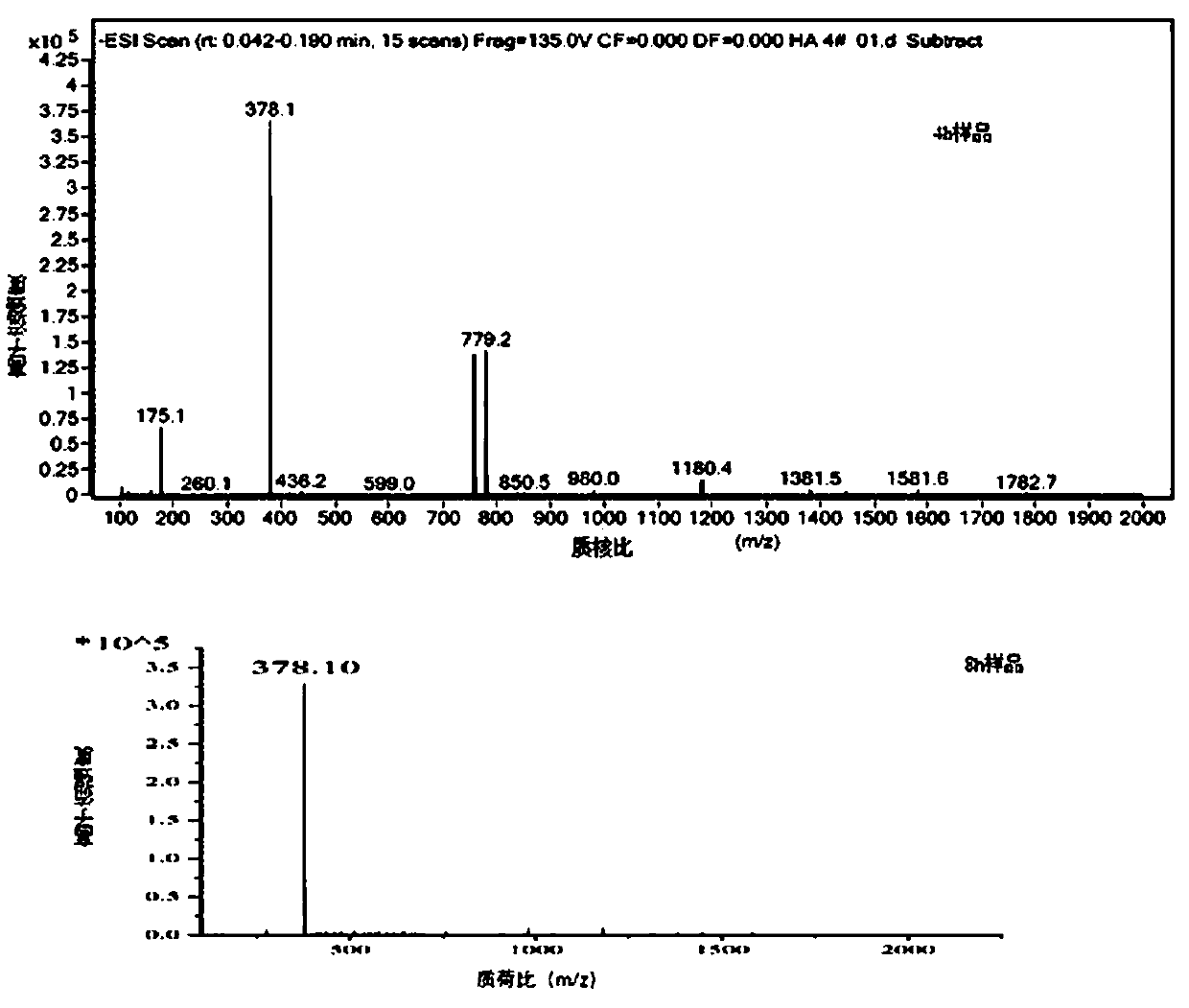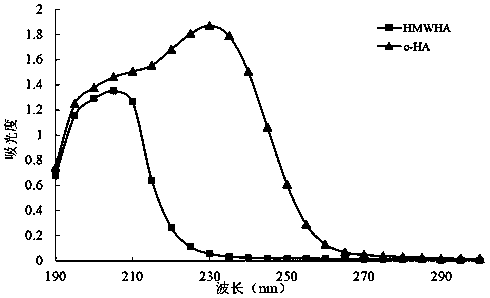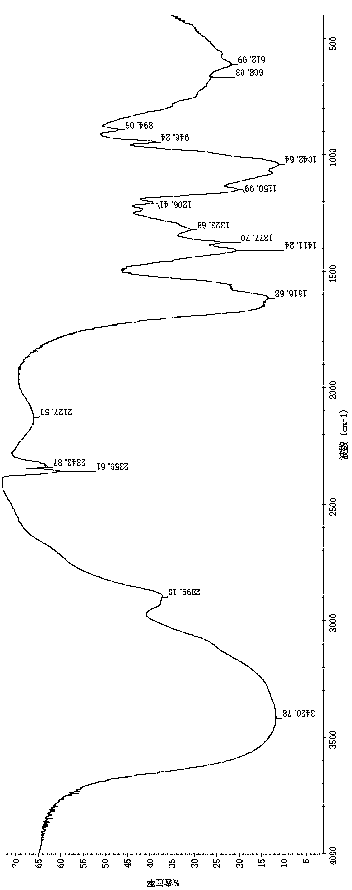Method for preparing small-molecule hyaluronic acid by enzymatic digestion method, obtained small-molecule hyaluronic acid and application thereof
A technology of hyaluronic acid and hyaluronidase, applied in the biological field, can solve the problems of unsuitable enzymatic large-scale production of small molecule hyaluronic acid, animal virus safety risks, structural damage, etc., and achieves good product uniformity and easy control. , the effect of complete structure
- Summary
- Abstract
- Description
- Claims
- Application Information
AI Technical Summary
Problems solved by technology
Method used
Image
Examples
Embodiment 1
[0049] Example 1. Cloning of hyaluronan lyase gene and construction of recombinant vector
[0050]Using the total DNA of Arthrobacter globiformis HL6 with the preservation number CCTCC M 2018452 as a template, through the functional gene analysis of the database, amplify with primers EC-F and EC-R containing restriction endonuclease sites Hyaluronan lyase gene HyLs (without signal peptide):
[0051] EC-F: GGACTAGTCATGTTCGCCAACCACGCCT (SEQ. ID. No. 3)
[0052] EC-R: GGGGTACCCGGATACCGGGCGACGTTAGC (SEQ.ID.No.4)
[0053] Among them, ACTAGT is the restriction site of endonuclease Spe Ⅰ, and GGTACC is the restriction site of endonuclease Kpn Ⅰ.
[0054] PCR is used for amplification, and the 50 μl reaction system is:
[0055] In a 50 μL reaction system containing DNA template, 1 μL; EC-F (10 μM), 1 μL; EC-R (10 μM), 1 μL; dNTP (2.5 mM each), 4 μL; Taq (2U / μL), 1 μL; 10× Taq buffer, 5 μL; ddH2O, added to 50 μL.
[0056] The PCR amplification program was: pre-denaturation at 95°C...
Embodiment 2
[0060] Example 2. Preparation of Hyaluronidase by Fermentation of Arthrobacter globiformis HL6
[0061] The preservation number is CCTCC NO: M 2018452 Arthrobacter globiformis HL6 is inoculated into the sterilized seed culture medium (seed culture medium formula is: sodium hyaluronate 0.2g / L, glucose 5g / L, peptone 2g / L L, dipotassium hydrogen phosphate 1.5g / L, MgSO 4 0.5g / L, pH 7.5), 32°C, 200r / min, cultivated for 24h to obtain seed liquid. Inoculate the seed culture liquid into the sterilized fermentation medium according to 1% inoculum size (sodium hyaluronate 2g / L, glucose 10g / L, peptone 5g / L, dipotassium hydrogen phosphate 1.5g / L, MgSO 4 0.5g / L, pH 7.5), 28°C, 200r / min culture for 24h, the fermentation broth was centrifuged at 4°C, 8000r / min for 10min, the fermentation supernatant was collected, and the hyaluronidase activity was determined to be 1×10 5 U / mL.
Embodiment 3
[0062] Example 3. Recombinant expression of hyaluronidase in Escherichia coli
[0063] 1. Select Escherichia coli strain DH5α, prepare competent cells, heat shock transformation (42°C, 60s), and incubate (37°C, 160rpm, 45min), and screen transformants on LB solid plates containing 75 μg / mL ampicillin sodium. Transformed strains cannot grow on plates. After PCR detection, positive cloned strains were obtained, and the plasmid was extracted with the Plasmid Mini Kit (OMEGA Bio-Tek Co.) kit to obtain the recombinant plasmid HTa-HyLs.
[0064] Select the Escherichia coli expression strain BL21(DE3), and transform the extracted recombinant plasmid HTa-HyLs into the Escherichia coli expression strain BL21 after preparing competent cells, heat shock transformation (42°C, 60s), and incubation (37°C, 45min). (DE3), screened on 75 μg / mL ampicillin LB solid plate, cultured at 37°C for 16 hours to obtain transformants, selected single colony transformants for PCR detection, and obtained ...
PUM
 Login to View More
Login to View More Abstract
Description
Claims
Application Information
 Login to View More
Login to View More - R&D
- Intellectual Property
- Life Sciences
- Materials
- Tech Scout
- Unparalleled Data Quality
- Higher Quality Content
- 60% Fewer Hallucinations
Browse by: Latest US Patents, China's latest patents, Technical Efficacy Thesaurus, Application Domain, Technology Topic, Popular Technical Reports.
© 2025 PatSnap. All rights reserved.Legal|Privacy policy|Modern Slavery Act Transparency Statement|Sitemap|About US| Contact US: help@patsnap.com



